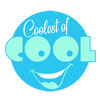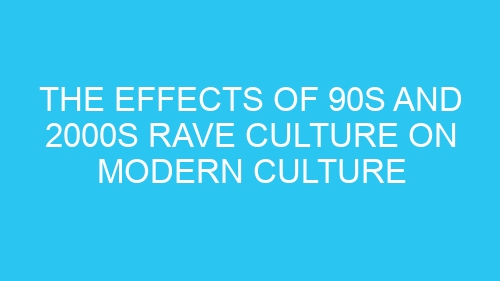-
Table of Contents
Influence of 90s and 2000s Rave Fashion on Current Trends
The 90s and 2000s were a time of neon colors, oversized clothing, and funky accessories. Rave culture was at its peak during this time, with people flocking to underground parties to dance the night away to electronic music. The fashion of the rave scene was just as wild and vibrant as the music, and its influence can still be seen in modern trends today.
One of the most iconic pieces of rave fashion from the 90s and 2000s was the UFO pants. These baggy, parachute-style pants were a staple in every raver’s wardrobe, providing ample room for dancing and showcasing a bold, rebellious style. While UFO pants may not be as popular today, their influence can be seen in the current trend of oversized, baggy pants that are making a comeback in streetwear fashion.
Another key element of rave fashion from the 90s and 2000s was the use of bright, neon colors. Ravers would deck themselves out in head-to-toe neon, from their clothing to their accessories to their hair. This love of neon has carried over into modern fashion, with neon making a big comeback in recent years. Whether it’s a neon crop top, a pair of neon sneakers, or even neon hair extensions, the influence of rave culture can still be seen in the vibrant colors that are trending today.
Accessories were also a huge part of rave fashion in the 90s and 2000s. Ravers would pile on the bracelets, necklaces, and rings, often opting for chunky, plastic pieces that glowed under blacklights. This love of statement accessories has carried over into modern fashion, with oversized earrings, layered necklaces, and chunky rings all making a big comeback. The more bling, the better!
Of course, no rave outfit would be complete without a pair of funky, colorful sneakers. Ravers in the 90s and 2000s loved to rock bright, eye-catching kicks that were as comfortable as they were stylish. This love of colorful sneakers has definitely carried over into modern fashion, with brands like Nike, Adidas, and Puma releasing bold, statement-making sneakers that are perfect for adding a pop of color to any outfit.
Overall, the influence of 90s and 2000s rave culture on modern fashion is undeniable. From oversized pants to neon colors to statement accessories, the bold, rebellious style of the rave scene continues to inspire designers and fashionistas alike. So next time you’re getting dressed, why not channel your inner raver and add a touch of 90s and 2000s flair to your outfit? After all, who doesn’t love a little neon and a lot of attitude?
Impact of Rave Music on Contemporary Electronic Dance Music
The 90s and 2000s were a time of neon colors, glow sticks, and pulsating beats. Rave culture was at its peak, with underground parties popping up all over the world. The music that defined this era was electronic dance music (EDM), a genre that continues to influence modern music to this day.
One of the biggest impacts of rave music on contemporary EDM is the use of repetitive beats and catchy melodies. In the 90s and 2000s, DJs would mix tracks together seamlessly, creating a continuous flow of music that kept partygoers dancing all night long. This style of mixing has become a staple in modern EDM, with DJs like Calvin Harris and David Guetta incorporating it into their sets.
Another influence of rave music on modern EDM is the use of synthesizers and drum machines. In the 90s and 2000s, producers would use these electronic instruments to create unique sounds that were unlike anything heard before. This experimentation with sound has carried over into modern EDM, with artists like Skrillex and Deadmau5 pushing the boundaries of what is possible with electronic music.
Rave culture also had a significant impact on the visual aspect of modern EDM. In the 90s and 2000s, raves were known for their elaborate light shows and trippy visuals. These visuals were often created using projectors and lasers, creating a mesmerizing experience for partygoers. Today, EDM festivals like Ultra and Electric Daisy Carnival continue this tradition, with elaborate stage designs and light shows that rival those of the 90s and 2000s.
One of the most enduring legacies of rave culture on modern EDM is the sense of community that it fosters. In the 90s and 2000s, raves were a place where people from all walks of life could come together and dance the night away. This sense of unity and acceptance has carried over into modern EDM, with festivals and clubs serving as a safe space for people to express themselves and connect with others.
Overall, the effects of 90s and 2000s rave culture on modern EDM are undeniable. From the music to the visuals to the sense of community, rave culture continues to shape the way we experience and enjoy electronic dance music. So next time you find yourself at a festival or club, take a moment to appreciate the legacy of rave culture and the impact it has had on the music we love today.
Evolution of Rave Culture into Mainstream Events and Festivals
Rave culture of the 90s and 2000s was a wild and vibrant time filled with neon colors, glow sticks, and thumping electronic music. It was a time when people would gather in abandoned warehouses or fields to dance the night away, fueled by a sense of freedom and rebellion. But what many may not realize is that the effects of rave culture from that era are still being felt today, as it has evolved into mainstream events and festivals that attract thousands of people from all walks of life.
One of the most significant ways that rave culture has influenced modern culture is through the rise of music festivals. In the 90s and 2000s, raves were often underground events that were organized by word of mouth or through flyers handed out on street corners. But as electronic music gained popularity and mainstream recognition, these events began to grow in size and scale, eventually morphing into the massive festivals we see today.
Nowadays, festivals like Coachella, Electric Daisy Carnival, and Tomorrowland draw in huge crowds of music lovers looking to dance, party, and escape from the monotony of everyday life. These events have become a rite of passage for many young people, who see them as a way to connect with others, express themselves, and let loose in a safe and controlled environment.
But it’s not just the music that has been influenced by rave culture – the fashion world has also taken cues from the neon-clad ravers of the past. Bright colors, bold patterns, and futuristic designs have all made a comeback in recent years, as designers look to capture the energy and excitement of the rave scene.
Even the way we socialize and connect with others has been shaped by rave culture. In the 90s and 2000s, ravers would often form tight-knit communities based on a shared love of music and dancing. These communities were inclusive and welcoming, with people from all walks of life coming together to celebrate their shared passion.
Today, social media has allowed these communities to thrive and grow, as ravers from around the world can connect and share their experiences online. Platforms like Instagram and Facebook have become virtual dance floors, where people can share photos, videos, and memories from their favorite festivals and events.
Of course, rave culture has not been without its critics. Some argue that the commercialization of these events has diluted the original spirit of rebellion and freedom that defined the scene in the 90s and 2000s. Others worry about the impact of drug use and excessive drinking at these events, which can sometimes lead to dangerous situations and health risks.
But despite these concerns, it’s clear that rave culture has had a lasting impact on modern culture. From music and fashion to socializing and community-building, the spirit of the rave scene lives on in the festivals and events that continue to draw in crowds of eager partygoers. So next time you find yourself dancing under the stars at a music festival, take a moment to appreciate the legacy of rave culture and the ways it has shaped the world we live in today.

